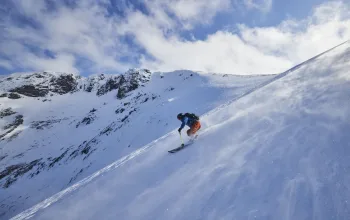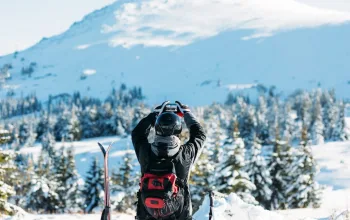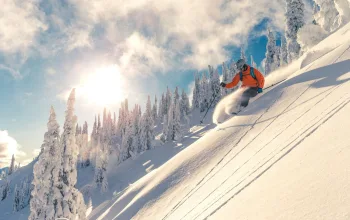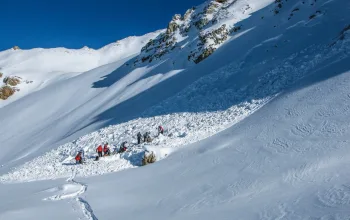Choosing the right camera for the job
If you’re planning on purchasing a compact for the trip, then look for tough models like the Olympus TG850 that won’t slow down in the freezing conditions. Make sure the model you choose has modes for shooting action such as a dedicated sports setting.
If you’re taking an interchangeable lens camera, then make sure you select a model with a fast shutter speed – practise with your camera’s tracking mode to keep your speedy subject in shot.
Which speed settings?
Use fast shutter speeds when trying to capture a sharp and focused action shot. However, if you want to solely focus on one element of your picture, whilst blurring the background, try following the action as you simultaneously use a slow shutter speed of about 1/15 sec (panning) - a method which is sure to make for very striking photographs!
Recommended camera: Canon 760D
Keep your whites white
Winter sports are not only a great opportunity to practice shooting fast-paced action shots, but they also provide a chance to capture scenic portraits. For idyllic snowy pictures you’ll want the snow to look clear, bright and white.
Modern cameras are pretty good when it comes to auto modes, but snow can often play havoc with the white-balance (WB). To avoid your scene looking too blue, select the daylight or sunny WB mode and see how it settles out the tones.
It may also be a good idea to purchase a UV filter for your camera lens, in order to prevent your photographs looking excessively blue.
Keep your focus
If you’re trying to shoot a subject in a busy scene, such as at the bottom of the ski slopes or by the lifts select a wide aperture to make sure your subjects are in focus and the cluttered background blurs out – this ensures that all the focus is kept on the stars of your shot.
An eye for detail
If you’re not joining in the sports yourself, don’t get cold and bored waiting on the sidelines – see what kind of creative still-life or macro opportunities you can find in your surroundings.
Perhaps this might be a pair of skis, frost on the ground, or a steaming mug of hot chocolate – any of these could make great subjects, and give you time to experiment with the right mode for the shot.
If it’s cold, wear glove liners – especially on your right hand, which will be constantly exposed to the elements if you have to take your glove off to change the camera settings for each shot.
Keeping your camera alive
At very low temperatures battery life can decrease drastically so it's important to keep your camera batteries warm – especially spare ones – by storing them close to your body. Watch out though, as suddenly exposing your camera to the cold when you want to take a shot risks fogging up the lens with condensation.
















